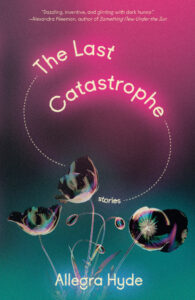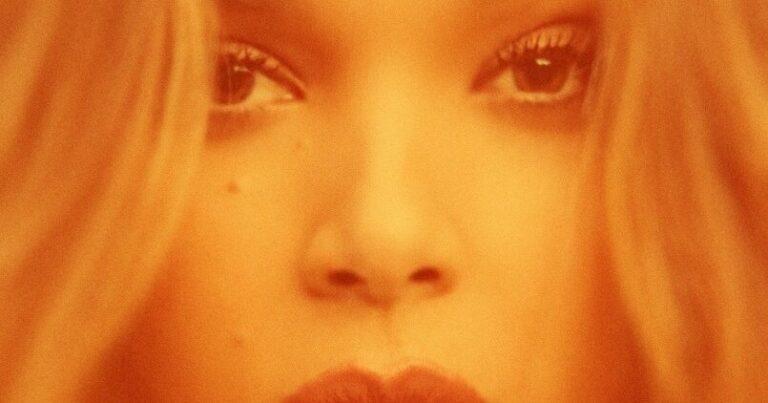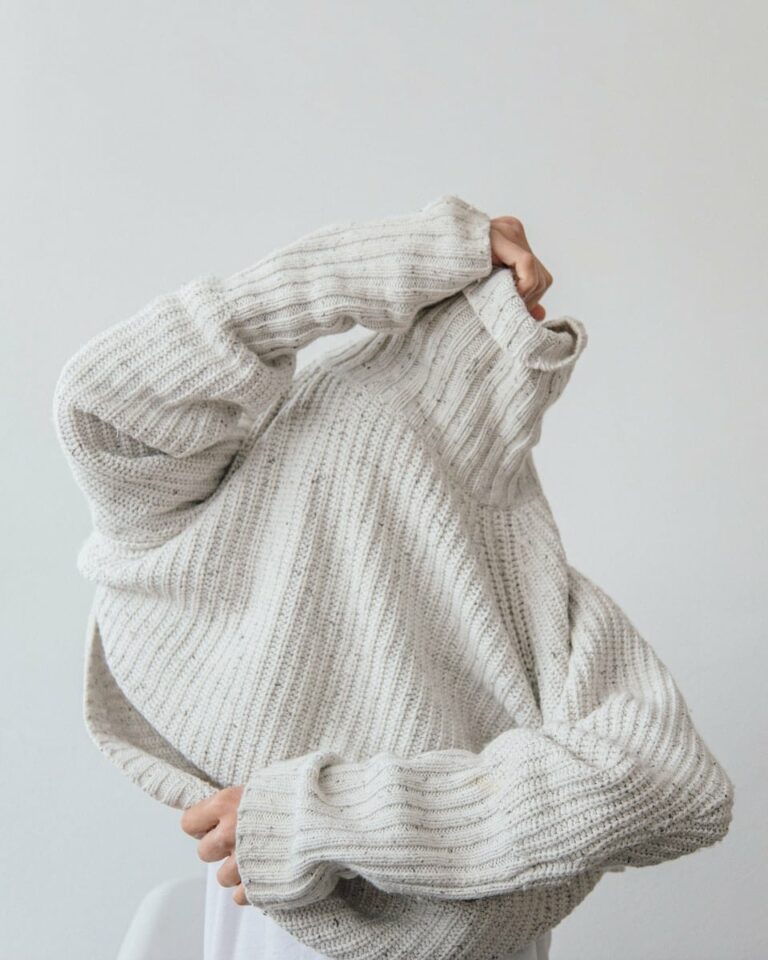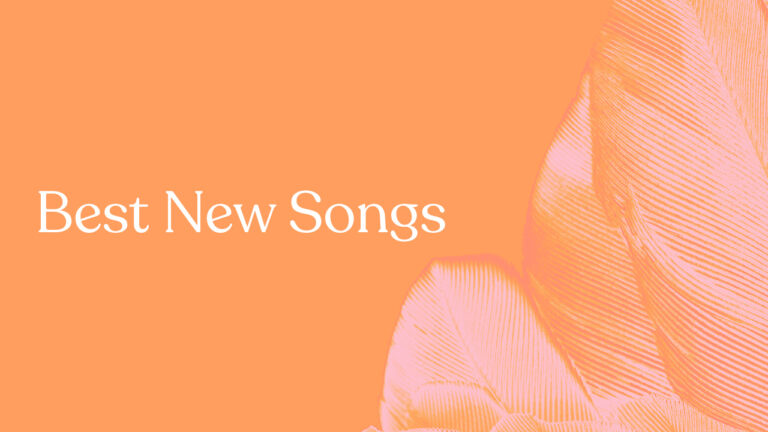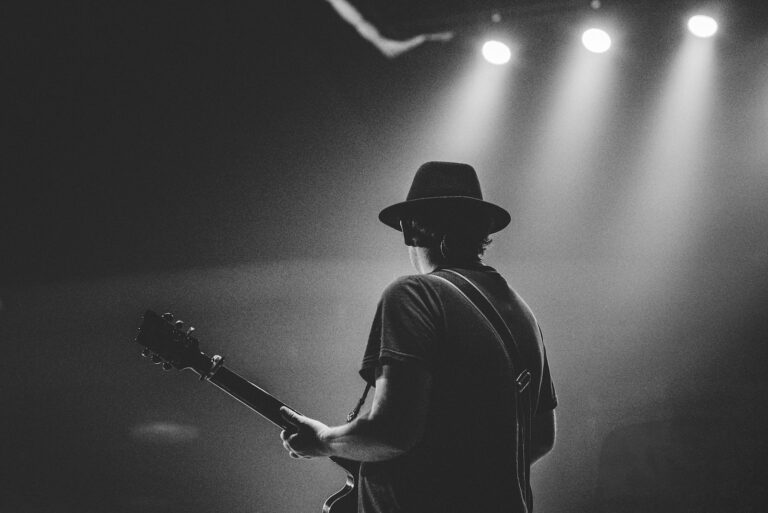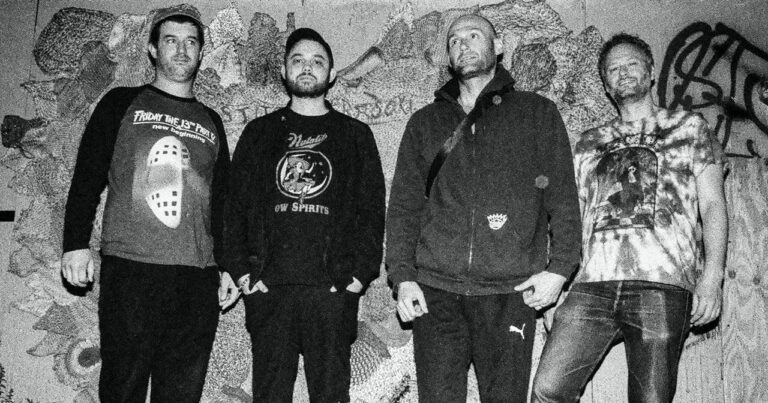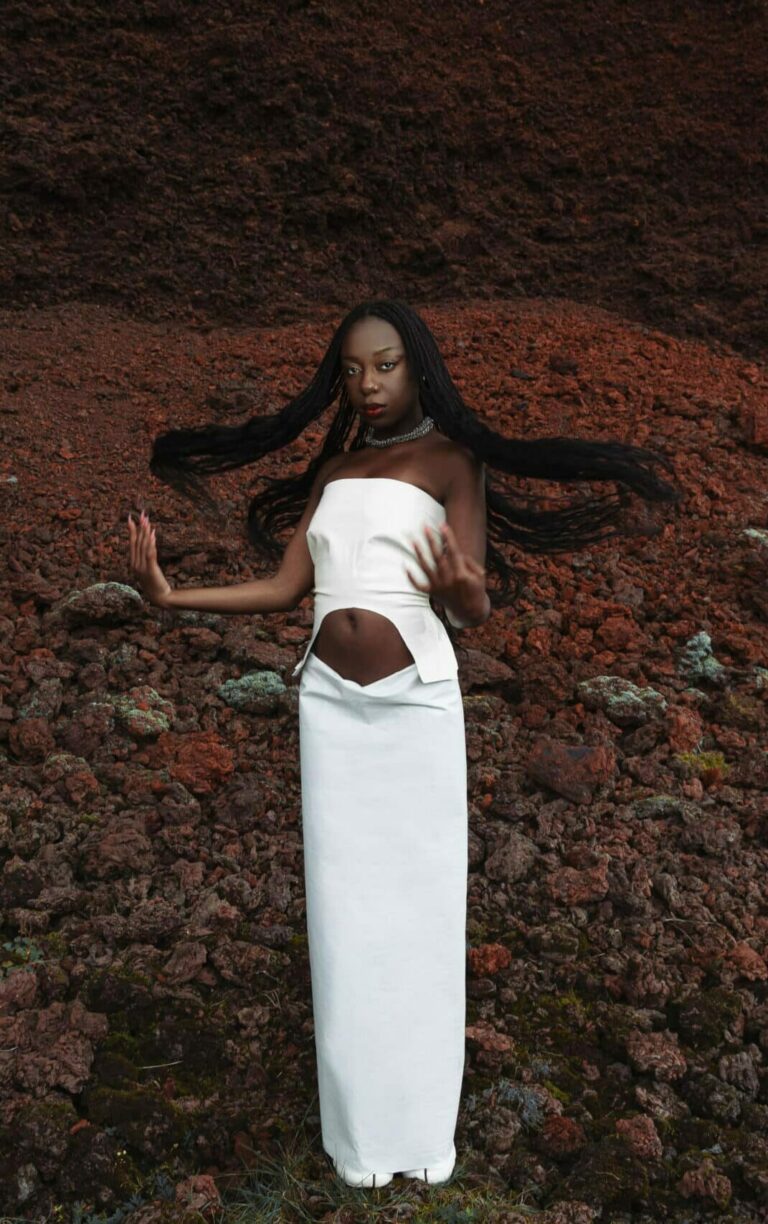With her futuristic approach to fiction, Allegra Hyde approaches subjects like extinction, the patriarchy, consumerism, and climate change with relative ease and humor. Her second short story collection, The Last Catastrophe, ranges from silly ‘what-if’ ideas like a family dressing up as moose, or people using zoo animals as conduits for their suicide. But amongst these topics are deep meditations on how we’re living life today and where our journey is heading, such as a rampant Algorithm that sends people crates of AK-47s, an environmental disaster stemming from the invention of a vaccine that allows people to eat grass once all the rest of the earth’s food is gone. Across fifteen incredible and mesmerizing short stories, Hyde offers a glimpse into the perils and anxieties of what life on this planet in the 2020s feels like, and a warning for the future.
Our Culture sat down with Allegra Hyde to discuss situation-based fiction, escalation of modern ills, and the balance between importance and didacticism.
Congratulations on your new book, The Last Catastrophe! What was it like working on and publishing two books just a year apart?
It’s a whirlwind. Putting out a debut novel kind of becomes pretty all-consuming, and I think I was just starting to come down from that experience and now I’m doing it again with this story collection. Maybe by virtue of them being stories, and having been through the book publishing process before, it feels a little bit different, although still busy.
I feel like the short story form is right up your alley because we were introduced to so many ideas and characters in the span of these 15 stories. Did you feel like you had more freedom to experiment?
Yeah, totally. I just got a lot of ideas and as much as I try to smush them into a novel, stories allow me to get in and get out, explore different concepts, characters, versions of the world more efficiently. I can also play around with form with greater ease. So I do love writing short stories.
I really enjoy you and other short-story writers like Kate Folk and Ling Ma who seem to be more situation-based: meaning that although characters are important, it feels like your stories start with saying “It would be interesting if…” Do you feel you work this way?
Yeah, I love the foundational speculative question of “What if?” And I’m also someone who will maybe take a question or an image or problem and see if I can put them all into conversation, or somehow make a story out of them. For a story like “Democracy in America”, I asked myself, ‘What if Alexis de Toqueville was wandering around a U.S. of the near future, and also, what if people can switch bodies, and also, what if these various other things were happening.’ I ended up stitching all these things together into a story — maybe it’s too much, I dunno, it depends on who you ask.
If the collection were an album, I feel like “The Future Is a Click Away” would be its lead single — it encompasses most of the collection’s themes. We see this rogue Amazon-like service doing its best to predict what customers are about to need, instead of waiting for orders. What was the inspiration for this story?
I think I was trying to show a potential future and where we could be heading when it comes to predictive technologies and targeted marketing. I’m sure you’ve had that eerie experience of talking about something with a friend, you know, maybe you mention someone had funny sneakers on or that you’re really interested in rabbits, and lo and behold, later that day rabbit figurines and sneakers start floating by. You’re half aware of them and half not, and sometimes you buy them. And sometimes you have that feeling of the algorithm seemingly guessing at things on my mind that I’ve never even verbalized. It feels like it’s putting data together, and it’s creepy. I wanted to escalate that experience further and maybe that’s what the whole collection is, in a way. If that story is the lead single, it’s all about escalating what is already present and making more visible what is already occurring.
If I had to choose a favorite, it might actually be “Afterglow” — the image of this desperate woman, after her husband leaves her, Gatorade tubes hooked into her backpack so she has access to sip all times in the day strikes a chord in my mind. And this is a funny premise, but I also really enjoyed how it turned this beautiful corner at the end — why did you want it to change in this way?
With this collection, I both wanted to get into some heavy topics, whether it be climate change or heavy grief, but I always wanted to balance these topics with moments of beauty, the possibility of joy, and connection. Writing that story, it was very much a process of trying to be very present with this struggling lady, but to also bear witness to simultaneous moments of otherworldly beauty and possibility. Because I think that’s what being alive is like. Our experiences of the world are multifaceted, they’re complex, and no single incident is without multiple angles of meaning and emotion.
Even though the collection is concerned with climate, capitalism, the patriarchy, food shortages, there are plenty of opportunities for comedy. These are usually in shorter stories, where you envision artists being locked up in cages for their own good, ghosts of plants and smaller animals going extinct showing up in the paranormal realm, and the excellent opener, where a caravan of RVs roams around a desolate America. Though these also concern heavy themes, were they slotted in between the longer stories to provide some breathing room?
The collection is organized in a way that will hopefully both suggest continuity and variation in terms of tone, style, and length — it’s challenging figuring out how to put together a story collection, and my editor and I did a lot of puzzling before we came to the setlist that we did. The overall structure was also intended to have the stories get further and further removed from our sense of known realities.
And there was also this question of where I’m going to put this giant novella, “The Eaters”, and it felt like the only place it could go is the very end, because otherwise, how could you follow it up? It also felt like it had the right ending note to what I was trying to do with the collection.
Yeah, let’s talk about “The Eaters”. It’s the collection’s largest and most complex story — told from multiple viewpoints, it purports the idea that in the future, when we run out of food, scientists develop a shot that allows us to consume grass, which the earth is full of. Something turns wrong, though, and the people who took the shot turn dangerous, eating everything, including humans, in their path. Reading it, I couldn’t help notice the parallels between current resistance to a certain vaccine to a real-life virus happening today and what you described in the story. Was this at least part of the inspiration?
Oh, no! My editor was worried that the story would seem anti-vax, in a way. I was like, ‘No, no! It’s different!’ Just let it be known that I’m not trying to perpetuate anti-vax propaganda in any way.
No, the story didn’t seem anti-vax, I wasn’t like, ‘Oh, this is something new about Allegra I didn’t know.’ I just thought you built on the idea of, ‘Oh god, what if they’re right?’ So it felt built on what’s happening today, but I enjoyed the parallels.
If anything, I was building off a longstanding tradition in science fiction of science gone awry, in some way, and the solutions not being thoroughly tested. Which I know is something anti-vaxxers grab onto. When it comes to environmental issues, there’s an issue of them being dealt with quickly and catastrophically. I’m thinking of Australia, where cane toads were introduced in order to mitigate another issue, but nothing ate the cane toads, and now they’re everywhere and it’s a huge problem. That’s the kind of scientific disaster I was thinking about. What can you do?
I love the premise of “Cougar” — this camp where people addicted to the internet in some form are brought together for a rehab-like scenario. The main character, LeeAnn, was admitted after scamming people out of money, and other attendees include senders of death threats or people who take pictures or videos of every act they do. Was it fun, and also a little scary, to come up with the many ways in which technology could seriously impact our lives and cause us to check into therapy?
Yeah, I think this story again was me trying to extrapolate from what already feels very real, and I was probably also drawing on my own sense of internet addiction I feel sometimes. I’m like, ‘Why am I obsessively scrolling Twitter instead of living my life?’ The internet, social media, it’s powerful, it’s intoxicating, and digital detox centers in a sense already exist. What if, when the internet becomes even more powerful, we need even more rigorous methodologies to untangle ourselves? Coming up with those various issues was kinda fun, but not fun in the sense that they already exist. Dysmorphia and body modification in response to the images we see online is very real.
I wanted to talk a little bit about how to attack climate fiction, or really any fiction that comments on the state of the world today or the tenuousness of the future, can turn didactic and preachy really quickly. And this collection, thankfully, did not. Was it difficult to walk this line between, ‘I want my stories to include real-life consequences, but I also don’t want it to be corny or done-before’?
Yeah, I certainly don’t want anyone to feel lectured at. I also don’t find writing lectures to be very fun. As much as I care about these various issues, it’s more fun to come at these issues in sideways, playful, or obscure ways, and that’s what I end up doing. The moments I do end up a little more didactic, that’s because it’s a character trait, and I’m thinking about the professor in “The Eaters”, who has various speeches. She’s just saying what she wants to say, and that felt like part of creating the story and character, and that made it seem okay to me.
If you had the chance to extrapolate one of the stories and turn it into a novel, which would it be?
Part of me did want to continue “The Eaters”, maybe because it’s already the longest. The idea of writing a novel seemed already within reach. I would be really curious to follow these characters as they deal with the situation they’re in, and as some of them inevitably choose to go outside the walls of their compound and out in the world. Zombie narratives aren’t uncommon, and it’s been interesting to see the rise of The Last of Us and see people getting really into zombies again. I was a Walking Dead fan forever. The exciting thing about working within these sorts of genres and tropes is that there are ways to subvert them or reinvent them and maybe take the best and most fun aspects of them and slide in some commentary or new perspective.
Was one of them particularly hard to write, or, looking at the finished product, you were really happy with how it turned out?
I think “Democracy in America” was really challenging. Because on one hand it’s speculative, it has this bizarre technology, but it was also trying to draw on an actual historical person, trying to map a historical trajectory onto the future. And it’s very sociologically invested, in a way. Trying to capture a sense of that wider world efficiently and in the space of a functioning story was challenging, but it’s probably one of the pieces I’m most proud of.
Finally, what’s next? You’ve already been so busy, but is there another novel or short story collection in the works?
I’m working on a new novel now, and it’s gonna be multi-genre. I’m hoping to merge historical fiction, maybe some autofiction, and also some speculative fiction. Caves are involved.
Those are scary.
I agree! I’m terrified of caves, and yet, I’m making plans to spend some time in them. Facing my fears.
The Last Catastrophe is available now.

